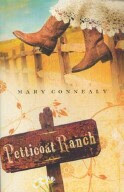Seven of Nine – uniqueness in your characters
I’m a HUGE Star Trek Voyager fan, and I’ve been watching the reruns on SpikeTV. I really like the character Seven of Nine. For you non Star Trek fans, Seven is a human woman who was a Borg (mindless cyborg) for most of her life, but Captain Janeway rescued her from the Borg collective and is teaching her how to be an individual. Much of her storyline is Seven learning to be a unique individual after being just like all the other mindless, unethical Borgs. Sometimes the situations she gets herself into are humorous, other times they are heartbreaking or bittersweet. Seven is a good example of a character who already IS unique. She has two aspects her character that make her so unique: (1) Her backstory as a Borg is already unusual and (2) her striving to become someone different gives the audience something to root for. Her goal of overcoming a complete LACK of individuality is a very different sort of character arc. Seven’s example also teaches me, as a writer, to work harder to break
